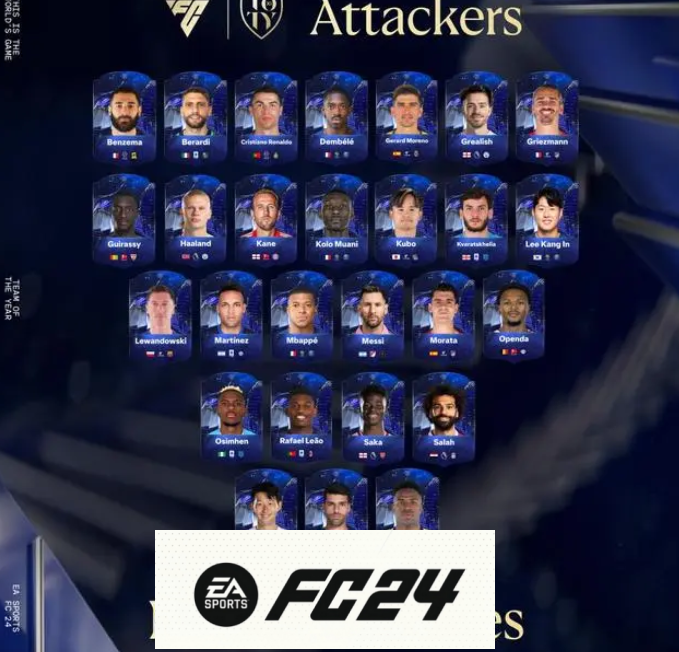NBA 2K25: First Impressions and Gameplay Breakdown
The anticipation for NBA 2K25 has been building for months, and as early gameplay footage and impressions start to trickle out, the community is abuzz with discussions about the new mechanics, features, and changes. Having had the opportunity to dive into the game, here's a detailed breakdown of the gameplay, including shooting mechanics, dribbling, signature moves, defense, and more. Whether you're a seasoned player or new to the series, these insights will help you understand what NBA 2K25 brings to the court.
Shooting Mechanics: Challenging but Rewarding
Shooting in NBA 2K25 initially feels a bit clunky. In my first game playing as Steph Curry, one of the most accurate shooters in the game, I was bricking shots left and right. Greening shots — perfectly timing them for maximum accuracy — was particularly difficult, and it seemed like I wasn't the only one struggling. Several other players also mentioned that they could only shoot consistently with specific players.
One possible reason for this could be the shot meter. I had the shot meter turned on by default, but I wasn't quite familiar with it. I wasn't able to figure out how to turn it off during my initial playthrough, which might have affected my performance. That said, after spending some time in 2K Learn, I started to get the hang of the shooting mechanics, and eventually, I was greening shots consistently with Curry.
The shooting system feels like it has a higher skill gap than in previous versions of the game. Players who are used to older mechanics might find themselves struggling on day one, and I expect many users to miss a lot of their shots until they fully adjust. However, once you get a feel for the system, it becomes much more rewarding. In fact, the game seems to encourage more thoughtful shot selection and perfect timing.
Signature Shots and Rhythm Shooting
One of the new features in NBA 2K25 is the introduction of signature shots. By flicking up on the right stick during a combo, players can perform signature animations that mirror the real-life moves of NBA stars. For instance, Luka Dončić's signature step-back move can be executed perfectly with just a flick of the stick. It's a fantastic addition that makes the dribbling and shooting experience more immersive, especially when you're playing with top-tier players known for their unique playstyles.
While Luka's signature move stood out, I found that this feature could be particularly game-changing in one-on-one situations, especially against the AI. The signature go-to moves seemed to consistently fool the computer-controlled defenders, and I imagine that once players get the hang of these animations, they will become a core part of many people's offensive strategies.
NBA 2K25 also introduces rhythm shooting, where you flick down and then up on the right stick to take a shot. This mechanic, while interesting, didn't seem particularly essential during my initial playthrough. It might provide some advantages once mastered, but it didn't feel like a game-changer during my first few hours with the game. We'll have to wait and see if this mechanic becomes more prominent in high-level gameplay as more players experiment with it.
Dribbling: Smooth but Lacking Speed Boost
The dribbling mechanics in NBA 2K25 felt smooth and responsive, making it easy to string together moves and outmaneuver defenders. However, I did notice a lack of speed boost or explosive launches out of dribble moves, something that might disappoint players who rely heavily on fast-paced dribbling sequences to break down defenses. I wasn't able to figure out if there were specific animations that could replicate this, but it's possible that dribbling enthusiasts in the community will discover ways to add more speed and explosiveness.
That said, the dribbling animations themselves are fantastic. Players like Darius Garland and Donovan Mitchell had particularly satisfying moves that flowed well with the game's overall pace. Experimenting with different players and their unique dribble packages will likely be a fun part of the NBA 2K25 experience.
Dunk Meter and Layups: Finishing at the Rim
One of the highlights of NBA 2K25 is the new dunk meter. Compared to previous versions, this new meter feels more intuitive, offering a timing-based system that's easier to master. I was able to pull off some impressive dunks with players like Anthony Edwards, and the timing felt smoother than in previous iterations. The dunk meter seems to offer a more accessible way to throw down powerful dunks, making it a welcomed improvement for slashers and rim-runners.
Layups, on the other hand, feel just as strong as they were in previous years, if not stronger. Even with players like LeBron James and Luka Dončić, I was able to hit layups in traffic with ease, making layup-heavy builds seem very viable. The layup mismatch badge is still effective, and I expect that players who focus on driving and finishing at the rim will find great success with layups in NBA 2K25. In fact, I found myself hitting more layups than outside shots during my initial playthrough, and the Eurostep and jelly layup packages were particularly useful in finishing around defenders.
Post Scoring and Interior Defense
While I didn't spend much time experimenting with post scoring, early impressions from others in the community suggest that it's incredibly strong this year. With badges like Post Powerhouse and Post Up Poet, post scorers might find themselves dominating in the paint, especially against smaller defenders. The combination of powerful post moves and strong badges could lead to a resurgence of traditional post play, which has been less prominent in recent years of NBA 2K.
On the defensive end, interior defense has seen significant improvements. Blocking shots in the paint feels much more consistent, and it's clear that the game has placed a greater emphasis on defending the rim. Even when playing as non-center players, I found it relatively easy to contest shots in the paint and prevent easy layups and dunks. Players looking to dominate the paint defensively should find success with this new system.
Perimeter Defense and Concerns About Blow-By Animations
One area of concern, however, is perimeter defense. During my playthrough against AI opponents, I noticed that blow-by animations were quite common, with players easily getting past my defenders on the perimeter. While the interior defense seemed solid, preventing most easy baskets in the paint, stopping players from getting into the paint in the first place felt more challenging.
It's important to note that this experience was against AI-controlled players, so we'll need to see how this translates to real player-versus-player matchups. However, if blow-by animations remain this frequent, perimeter defense might become a major issue, especially for players who rely on lockdown defenders to shut down opposing offenses.
Additionally, many players I spoke with mentioned that steals feel much less effective this year. There were complaints about the lack of plucking animations, meaning that defenders might struggle to strip the ball from offensive players. If this turns out to be the case, it could lead to a meta where offensive players have an easier time maintaining possession and breaking down defenses.
AI Behavior and General Impressions
The AI in NBA 2K25 feels more balanced than in previous years. While they're easier to score on, especially with the signature go-to moves, they are also harder to stop defensively. The AI seems to have better floor spacing, making it tougher to keep them from getting good looks. One notable change is that players can now hit white releases (slightly mistimed shots) more frequently than in previous versions. This could be a point of contention within the community, especially in competitive games, where hitting a white release for a game-winner might feel unfair to some players.
Conclusion: A Solid Step Forward with Room for Improvement
Overall, NBA 2K25 feels like a solid step forward in the series, with improvements to dribbling, signature moves, dunking, and interior defense. However, concerns about perimeter defense, blow-by animations, and the effectiveness of steals might leave some players feeling apprehensive, especially those who rely on defensive builds.
The new mechanics, like rhythm shooting and signature go-to moves, add depth to the gameplay, and mastering them will likely separate casual players from the elite. As players spend more time with the game, the community will undoubtedly find new strategies, metas, and ways to exploit the game's systems.
For now, NBA 2K25 presents a fun and challenging basketball simulation experience, and I'm excited to see how the game evolves over the coming months. Whether you're a sharpshooter, a dribbler, a slasher, or a lockdown defender, there's something here for everyone — you just might have to spend a bit more time in the lab to master it.
https://www.nba2king.com/Nba-2k25-Mt.htmlNBA 2K25: First Impressions and Gameplay Breakdown
The anticipation for NBA 2K25 has been building for months, and as early gameplay footage and impressions start to trickle out, the community is abuzz with discussions about the new mechanics, features, and changes. Having had the opportunity to dive into the game, here's a detailed breakdown of the gameplay, including shooting mechanics, dribbling, signature moves, defense, and more. Whether you're a seasoned player or new to the series, these insights will help you understand what NBA 2K25 brings to the court.
Shooting Mechanics: Challenging but Rewarding
Shooting in NBA 2K25 initially feels a bit clunky. In my first game playing as Steph Curry, one of the most accurate shooters in the game, I was bricking shots left and right. Greening shots — perfectly timing them for maximum accuracy — was particularly difficult, and it seemed like I wasn't the only one struggling. Several other players also mentioned that they could only shoot consistently with specific players.
One possible reason for this could be the shot meter. I had the shot meter turned on by default, but I wasn't quite familiar with it. I wasn't able to figure out how to turn it off during my initial playthrough, which might have affected my performance. That said, after spending some time in 2K Learn, I started to get the hang of the shooting mechanics, and eventually, I was greening shots consistently with Curry.
The shooting system feels like it has a higher skill gap than in previous versions of the game. Players who are used to older mechanics might find themselves struggling on day one, and I expect many users to miss a lot of their shots until they fully adjust. However, once you get a feel for the system, it becomes much more rewarding. In fact, the game seems to encourage more thoughtful shot selection and perfect timing.
Signature Shots and Rhythm Shooting
One of the new features in NBA 2K25 is the introduction of signature shots. By flicking up on the right stick during a combo, players can perform signature animations that mirror the real-life moves of NBA stars. For instance, Luka Dončić's signature step-back move can be executed perfectly with just a flick of the stick. It's a fantastic addition that makes the dribbling and shooting experience more immersive, especially when you're playing with top-tier players known for their unique playstyles.
While Luka's signature move stood out, I found that this feature could be particularly game-changing in one-on-one situations, especially against the AI. The signature go-to moves seemed to consistently fool the computer-controlled defenders, and I imagine that once players get the hang of these animations, they will become a core part of many people's offensive strategies.
NBA 2K25 also introduces rhythm shooting, where you flick down and then up on the right stick to take a shot. This mechanic, while interesting, didn't seem particularly essential during my initial playthrough. It might provide some advantages once mastered, but it didn't feel like a game-changer during my first few hours with the game. We'll have to wait and see if this mechanic becomes more prominent in high-level gameplay as more players experiment with it.
Dribbling: Smooth but Lacking Speed Boost
The dribbling mechanics in NBA 2K25 felt smooth and responsive, making it easy to string together moves and outmaneuver defenders. However, I did notice a lack of speed boost or explosive launches out of dribble moves, something that might disappoint players who rely heavily on fast-paced dribbling sequences to break down defenses. I wasn't able to figure out if there were specific animations that could replicate this, but it's possible that dribbling enthusiasts in the community will discover ways to add more speed and explosiveness.
That said, the dribbling animations themselves are fantastic. Players like Darius Garland and Donovan Mitchell had particularly satisfying moves that flowed well with the game's overall pace. Experimenting with different players and their unique dribble packages will likely be a fun part of the NBA 2K25 experience.
Dunk Meter and Layups: Finishing at the Rim
One of the highlights of NBA 2K25 is the new dunk meter. Compared to previous versions, this new meter feels more intuitive, offering a timing-based system that's easier to master. I was able to pull off some impressive dunks with players like Anthony Edwards, and the timing felt smoother than in previous iterations. The dunk meter seems to offer a more accessible way to throw down powerful dunks, making it a welcomed improvement for slashers and rim-runners.
Layups, on the other hand, feel just as strong as they were in previous years, if not stronger. Even with players like LeBron James and Luka Dončić, I was able to hit layups in traffic with ease, making layup-heavy builds seem very viable. The layup mismatch badge is still effective, and I expect that players who focus on driving and finishing at the rim will find great success with layups in NBA 2K25. In fact, I found myself hitting more layups than outside shots during my initial playthrough, and the Eurostep and jelly layup packages were particularly useful in finishing around defenders.
Post Scoring and Interior Defense
While I didn't spend much time experimenting with post scoring, early impressions from others in the community suggest that it's incredibly strong this year. With badges like Post Powerhouse and Post Up Poet, post scorers might find themselves dominating in the paint, especially against smaller defenders. The combination of powerful post moves and strong badges could lead to a resurgence of traditional post play, which has been less prominent in recent years of NBA 2K.
On the defensive end, interior defense has seen significant improvements. Blocking shots in the paint feels much more consistent, and it's clear that the game has placed a greater emphasis on defending the rim. Even when playing as non-center players, I found it relatively easy to contest shots in the paint and prevent easy layups and dunks. Players looking to dominate the paint defensively should find success with this new system.
Perimeter Defense and Concerns About Blow-By Animations
One area of concern, however, is perimeter defense. During my playthrough against AI opponents, I noticed that blow-by animations were quite common, with players easily getting past my defenders on the perimeter. While the interior defense seemed solid, preventing most easy baskets in the paint, stopping players from getting into the paint in the first place felt more challenging.
It's important to note that this experience was against AI-controlled players, so we'll need to see how this translates to real player-versus-player matchups. However, if blow-by animations remain this frequent, perimeter defense might become a major issue, especially for players who rely on lockdown defenders to shut down opposing offenses.
Additionally, many players I spoke with mentioned that steals feel much less effective this year. There were complaints about the lack of plucking animations, meaning that defenders might struggle to strip the ball from offensive players. If this turns out to be the case, it could lead to a meta where offensive players have an easier time maintaining possession and breaking down defenses.
AI Behavior and General Impressions
The AI in NBA 2K25 feels more balanced than in previous years. While they're easier to score on, especially with the signature go-to moves, they are also harder to stop defensively. The AI seems to have better floor spacing, making it tougher to keep them from getting good looks. One notable change is that players can now hit white releases (slightly mistimed shots) more frequently than in previous versions. This could be a point of contention within the community, especially in competitive games, where hitting a white release for a game-winner might feel unfair to some players.
Conclusion: A Solid Step Forward with Room for Improvement
Overall, NBA 2K25 feels like a solid step forward in the series, with improvements to dribbling, signature moves, dunking, and interior defense. However, concerns about perimeter defense, blow-by animations, and the effectiveness of steals might leave some players feeling apprehensive, especially those who rely on defensive builds.
The new mechanics, like rhythm shooting and signature go-to moves, add depth to the gameplay, and mastering them will likely separate casual players from the elite. As players spend more time with the game, the community will undoubtedly find new strategies, metas, and ways to exploit the game's systems.
For now, NBA 2K25 presents a fun and challenging basketball simulation experience, and I'm excited to see how the game evolves over the coming months. Whether you're a sharpshooter, a dribbler, a slasher, or a lockdown defender, there's something here for everyone — you just might have to spend a bit more time in the lab to master it.
https://www.nba2king.com/Nba-2k25-Mt.html




